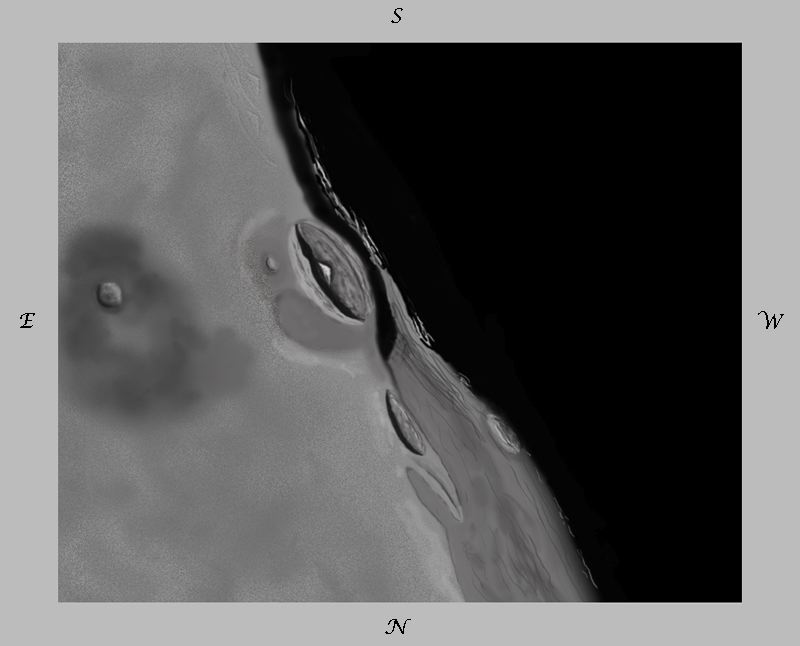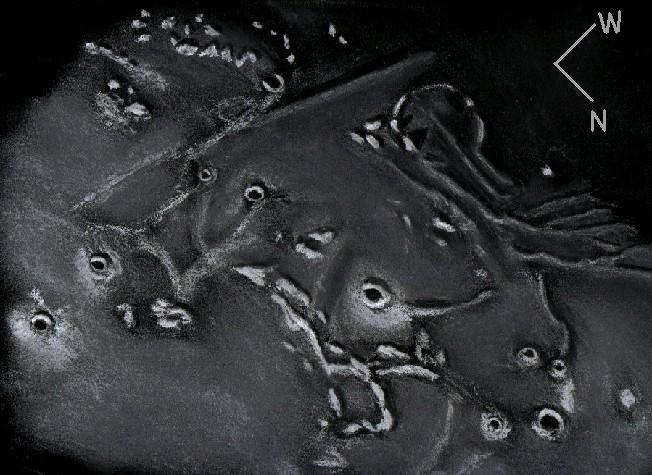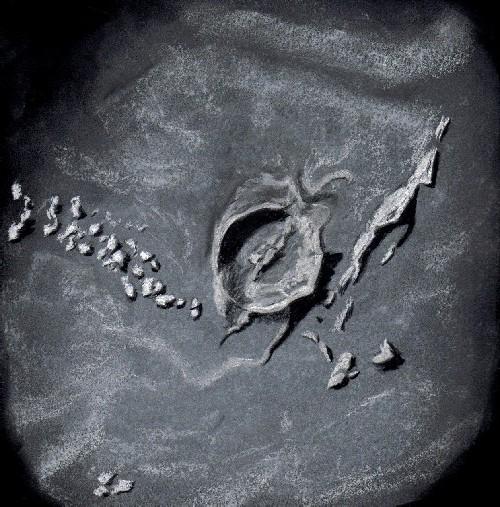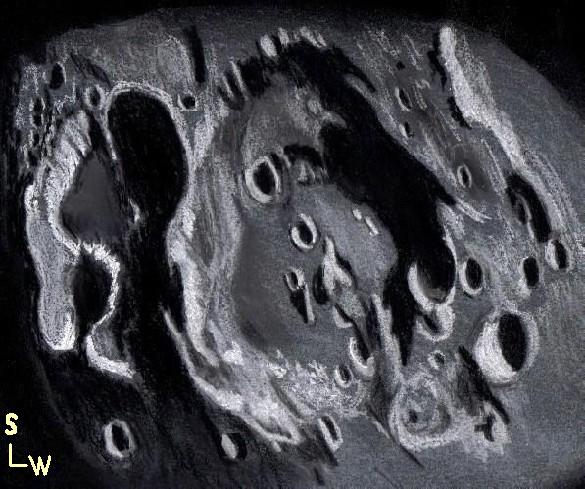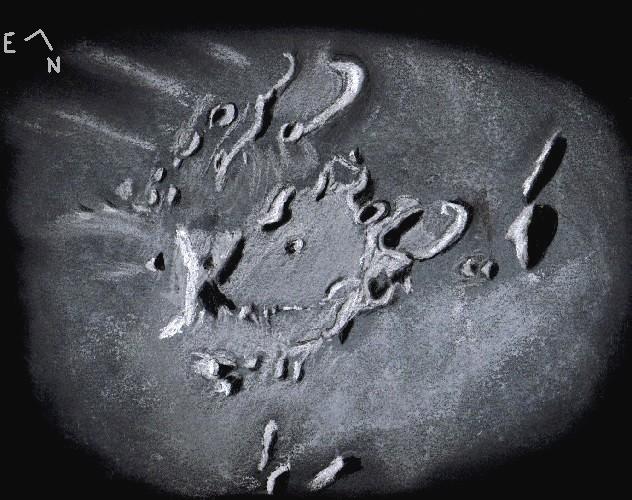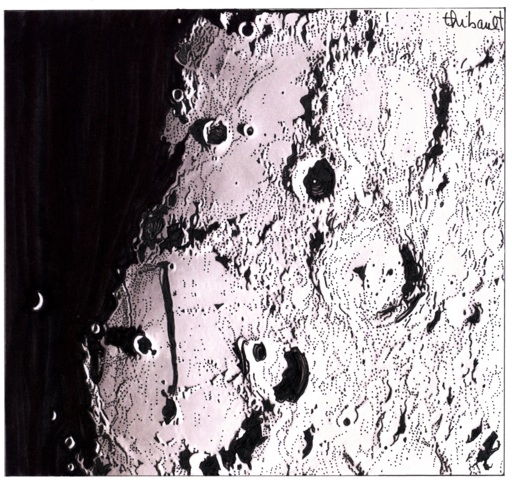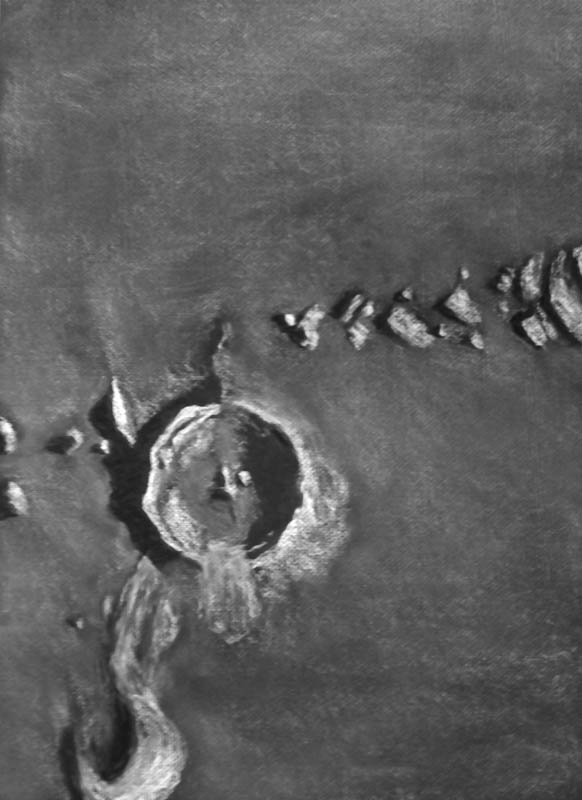
Eratosthenes and environs
Sketch and Details by Richard Handy
Description: Eratosthenes is the exquisite jewel sitting next to the Hope Diamond of Lady Luna, Copernicus. Consequently, Eratosthenes is often overshadowed by the spectacle of this lunar Juggernaut, however this sparkling gem of a crater and its immediate environment convey some of the major events that dominated the northwestern quadrant of the Moon. From 4.5 billion to 4.2 Billion years ago, a few hundred million years before the period of Heavy Bombardment, the large impactor Gargantuan, first proposed by the British geologist Peter Cadogan, struck the Moon with a force and fury far beyond our comprehension. The possibility that this impact could have, in one single event, reshaped the mean crustal thickness on both sides of the Moon is a staggering thought. Fed by fissures and cracks in the broken crust created by the force of the impact, magmas found easy passage to the basin floor. Over the intervening eons, the great basin formed by that event would eventually fill in with mare lavas to form Oceanus Procellarum. About 3.85 billion years ago, during the period of Late Heavy bombardment (3.8-4.0 by ago) the Moon received another enormous blow to this same northwest quadrant. The impactor, though half the size, formed another great basin, again flooding with mare lavas like Procellarum, to become the beautiful Mare Imbrium. To the east of Eratosthenes, the arcuate sweep of the Montes Apenninus, part of the remnant rim of giant Imbrium, seem to diminish to a few low outcrops as they approach the crater, probably appearing much like a mesa would if you were strolling on the surface. There are a few of these buried massifs on Eratosthenes’ northwestern flanks, although the great circular mountain range disappears in this region only to reappear as the Montes Carpatus to the northwest of Copernicus. There is a wonderful flame-like mountainous formation to the southwest of Eratosthenes, it appears to have been shaped by the fluidized flow fronts from the Imbrium event. Both Copernicus and Eratosthenes are benchmark features, meaning their formations correspond to the beginning of a geological period. Fifty-eight kilometer Eratosthenes was excavated by a 3 km wide impactor some 3.2 billion years ago. It’s rugged walls and terraces show significant scalloping and craterlet battering. The mare around Eratosthenes seemed coated in rays from 93 km Copernicus, which formed 1.1 billion years ago by an impactor 4.5 km in diameter, inaugurating the Copernican period. During this last 1000 million years most complex plant and animal life on Earth evolved.
Sketch details:
Subject: Eratosthenes and environs
Date: 12-28-2006 Start 5:27 UT End 6:50 UT
Lunation: 8.64 days Phase: 68.6 deg Colongitude: 19.8 deg
Illumination: 68.2 % Lib in Lat: -03 deg 24 min Lib in Long.: +01 deg 36 min
Seeing: Terrible most of the session, Antoniadi IV-V, only very occasionally III
Weather: clear
Telescope: 12” Meade SCT f/10
Barlow: 2X Televue
Binoviewer: Williams Optics Bino-P with 1.6X nosepiece
Eyepieces: 20 mm W.O. Plossls
Magnification: 396X
Sketch Medium: White and black Conte’ Crayon on textured black Strathmore paper
Sketch size: 18”x 24”

